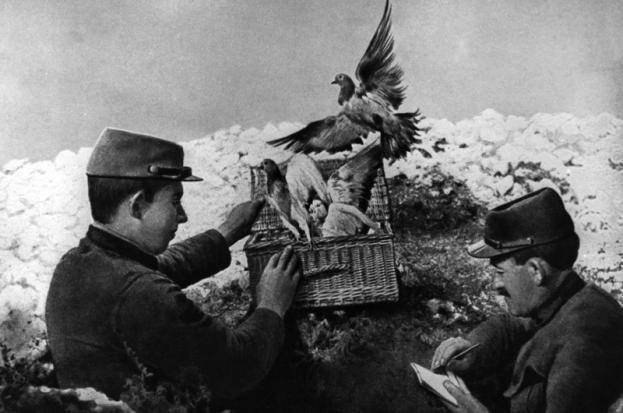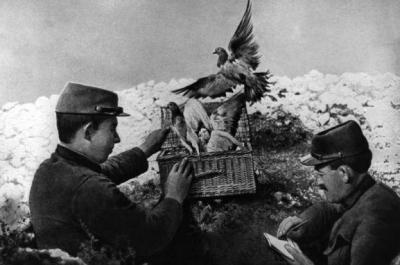Pigeons were extensively used in the two World Wars as postal messengers, and some of them even received medals. However, that was not enough, as the U.S. military during World War II considered making them aim weapons and commit suicide!
The story began in 1943 when the U.S. military faced a problem in naval combat. They had enough bombs and missiles, but lacked a sure and reliable method to accurately direct these munitions toward their targets, especially when aiming at enemy warships. The American scientist specializing in psychology and animal and human behavior, B.F. Skinner, found the solution to this problem by employing carrier pigeons just like in correspondence!
At that time, Skinner was working as a professor at the University of Minnesota, conducting experiments on animals to understand human behavior. Since 1940, he had started conducting experiments on these birds and developed a method to utilize them to guide another object. The experiment was relatively simple, placing the pigeons in a leather harness. When they pecked at a specific image in front of them, a small compartment of grains would open as a reward. This way, the pigeons were trained to guide a small cart to the target point by pecking at images. Later, the experiments progressed to having the pigeons direct weapons toward other targets, such as models of small ships.
Initially, Skinner was unable to gain the attention of the U.S. military, but in June 1943, the Pentagon's Scientific Research and Development Office awarded General Mills, which was funding Skinner at the time, a small contract in an attempt to develop a guidance system using pigeons. Peggy Kidwell, curator of medicine and science at the Smithsonian National Museum of American History, comments on this matter: “During World War II, there was significant concern regarding missile guidance... military officials really wanted to know how to guide them accurately. Skinner presented his plan to the National Defense Committee, which he named the 'Pigeon Project.' The committee members were skeptical, but they granted Skinner $25,000 to start.”
The American scientist concluded that "the birds performed such a task better if they worked in a group of three." The three pigeons would be placed in the nose cone of the missile, which was named the "Swan," and each pigeon would look at a small screen in front of it displaying the terrain ahead of the launched missile. When the pigeon pecked at the image of the target, which was a ship, small balls connected to their heads would guide the missile. Of course, the pigeons could not leave the missile and would end with the target.
Experiments were conducted on the pigeons to guide missiles to the target, and they were highly successful, with the pigeons skillful in identifying the target and moving towards it without being affected by noise, temperature fluctuations, or changes in the missile's altitude. This project remained on paper without coming to fruition and was closed in 1944. Later, in 1948, the U.S. Navy revived the idea of using pigeons for guiding anti-ship missiles, renaming the "Pigeon Project" to "Orcon." Fortunately for the pigeons, the project was shelved again in 1953, as its importance diminished thanks to advancements in guidance system technology, eliminating the need for controlling weapons using a living creature.




